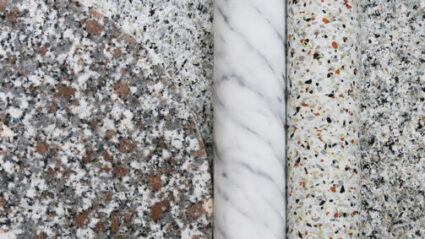The body of the artist. The artist’s body. The figure of the artist. The presence of the artist. The role. The place. The time. The space.
Carmelo Nicotra occupies a very special position in the panorama of international art today. He bridges the ancient past and modern present, with effortless ease. A Mediterranean man, he is also comfortable chatting with Rio de Janeiro and Copenhagen. For Nicotra runs a business, or really several, or maybe all that are one and the same.
Born in Favara to parents who soon detected his artistic talents, and propagated them by sending their son to the Academy of Fine Arts in Palermo, Nicotra was exposed to the classics, in all categories, at an early age. Favara is near Agrigento, or the Valley of Temples, one of the most magical areas in the world, where temple upon temple pays grand testimony to the Greek heritage of this part of Sicily. Nicotra is a Greek name. An avid reader, Nicotra devoured literature already as a youth, gravitating toward Sicilian authors such as Luigi Pirandello, Leonardo Sciascia, and, in school, the obligatory and beloved Giovanni Verga. Their tender and yet pitiless gaze at Sicilian life, in all its dimensions, appealed to him, and as Nicotra’s talents have matured, he seems to imbue his work ever more with a combination of distance and profound affection for his native land.
Take his dispassionate gaze at the many examples of unfinished architecture in Sicily. The ramshackle porticos cobbled together with pilasters and swags, with column bases, and other attempts at flying grandeur, all too often undermined by a heap of garbage just a few feet away, or the sight of a plastic drainpipe sticking cheerfully through a medieval wall. Nicotra sees all this and more. The public institutions built with ample funding and then quietly left to atrophy, as operating expenses seemingly evaporate under the relentless Sicilian sun. The ceremony and pomp In action for feast days, and subsequent neglect and abandon of the very same stages, just a few weeks later. The efforts to ennoble the spirit through material means. The agglomeration of stone and its application in temples, palaces, churches, and convents. Nicotra adores all kinds of building types and all types of matter. The materials used to spiff up a floor, far easier to wash than stone, and with a satisfying warmth that only modern linoleum can give. Plastic gleam to replace Carrara sheen. Formica! Tinsel! Stucco! Mirrors!
The props of the simplest Sicilian homes never fail to conjure emotion in Nicotra. And so he has dedicated his first exhibition for Galleria Massimo Ligreggi to this conflation of domesticity and theatre, an essay on design and décor, on his homeland, on his origins, on the universal nature of mankind, yearning for better things, other places, but finally, just a tiny bit content to remain safely at home.
Trained at the Academy of Fine Arts in Palermo, by artist-professors with whom he still has contact today, Nicotra originally hails from Favara, a medium, gritty, Sicilian town with an unsavoury past as a stronghold of bad forces. Yearning for a Sicily that will never be, Nicotra’s firm realism nonetheless enables him to love the Sicily that is, the one he chooses to embrace every day.1
Nicotra has received highest accolades for his award-winning business, Scocca Papillon, and this medium business based in Favara functions like a charm in the world of Italian commerce, reaching audiences on all parts of the globe, with his stylish series of bowties, fabricated from vintage materials, and accessible to all on the platform Etsy. Nicotra works alongside his mother to create endless configurations of form and color, and his apparel has been widely featured in high-level fashion magazines.
For his exhibition at Massimo Ligreggi, Nicotra reaches into his arsenal of classical shapes, and modern materials, stretching from pillar fragments, to pediments, to stage props, in a firm and decisive installation that calls to mind theatre, yet is a quotation of reality itself, in a gesture of alienation that is the hallmark of art.
He has used this technique in other ways in past works. There is the marvelous 2008 work about Sicilian mourning conventions, in which Nicotra codified the use and abuse of black attire, and exhibited his findings on a public billboard. His excavation of piety via statistics is a classic in Conceptual art, but even more so, could mimic or incarnate a public service announcement, and indeed his summary has universal appeal, not necessarily only for a Sicilian public.
His early installation hanging of middle class furniture on a building wall in Favara is perhaps one of Nicotra’s best-known works. It’s an arresting sight, as if the furniture had remained while the rest of the building had fallen to the ground. Nicotra was referring to the earthquake calamities that occasionally wreak havoc, but at the same time, he is literally elevating the taste of the Favara bourgeoisie to the level of monument. A gentle and courageous act of commemoration in a town that only recent has attained economic normalcy, thanks to the extraordinary work of one patron and hundreds of passionate volunteers.
The way in which Nicotra relates to reality is based more on ancient ideas of proportion and the role of art in society, than on any obsessive study of recent decades of art. He uses techniques of alienation more familiar in literature and poetry, than in art, and is less concerned with actual objects, than in creating atmosphere and modes of perception. His technique sets the practice of Nicotra apart from his peers and art historical precendents. It is almost pointless to delve into Nicotra’s use of Formica, plaster, vintage furniture, or silhouettes, and compare him to Richard Artschwager, Brue Nauman, Guillaume Bijl, or, say the architects of Post-Modernism. Nicotra is cognizant of the mechanisms of art and the necessity of his practice to evolve on multiple platforms, and rightly sees no need for committing to any one medium or style. He is as comfortable designing dress as he is creating a photo set, as doing the exhibition design of the Museum of the Almond, Favara, as he is creating meta-sculptural installations in Catania.
Perhaps the most elemental way to consider the figure of Carmelo Nicotra is as the key to a new way of seeing things. In a cross-temporal way, bridging cultures and traditions, while firmly rooted in place.
I solicited some remarks on Nicotra from Nicolas Liney, a doctoral candidate in Classics at University of Oxford. Liney hails from Australia, yet his love for and knowledge of ancient Greece and Rome rival any young scholar from Athens or Italy. He is a new type of scholar, keen to spread news of antiquity in a contemporary key. Liney writes:
Carmelo Nicotra is an artist who is re-inhabiting the theatrical world of antiquity. His works particularly exhibit a deep connection with the dramaturgy of Greek tragedy. For the ancients, the theatre was a place of re-presentation and reproduction of well-known stories, organized to reveal something new, unfamiliar and profoundly disorienting. Nicotra’s strange spaces and orchestration of the familiar and quotidian into an unusual narrative similarly dislodges us, prompting us into a cathartic state of self-reflection. They hover between the creative act and representation, what Aristotle would call mimesis – the fabricated imitation of the real. What especially intrigues me is how Nicotra carefully negotiates space as a site of embodied contest and struggle between the ideological extremes of architectural, social and political realms. Like tragedy, there is no scene of consensus, but playful imbalance and continuous change. 2
If we see Carmelo Nicotra as an arbiter of the beautiful, as someone who is able tor produce harmony, and poetry, as someone with the gift of creating beauty, we restore to this maker a link with the divine. Although it is not pertinent to discuss the religious beliefs of the artist, we will say that Nicotra’s work, while purposefully eschewing perfection, nonetheless alludes to it by its very absence. It is precisely through this indirect honoring of beauty, no matter how humble the form, that Nicotra points to the godly and sublime.
Can one compare Nicotra to his Sicilian peers? The work of a Francesco De Grandi plays similarly with conventions of taste, and notions of kitsch, pushing the forms so far as to empty out their sentiment, and restore pathos and gravitas. Stefania Zocco conjures atmosphere and light, in a similar way to Nicotra, whose naturalism manifests itself in the ability to capture perfect shades of sky, sea, clouds, flowers, stone, or sand. Josè Angelino, from Sicily’s southern coast, analyzes material too, down to its molecular and atomic components. Domenico Mangano has isolated ceramics and other materials as deep conveyors of meaning, even while fusing his practice with a Netherlandish partner, De Rooj, yet all the while probing the nature of material to its absolute core. Alessandro Piangiamore has engaged in similar experiments, with wind, with heat, with scent. Nicotra balances, and places, and asserts the importance of delicacy in an increasingly rough and virtual world. His is a vision which restores and cures, and his voice is that of a commentator or visual poet. Far from needing armatures of art history, his work seems to expand ever more, and calls for commissions and channeling, both local and abroad.
Nicolas Liney continues:
Antiquity, and what we call ‘the classics’, was never meant to be immutable and timeless. The ancients reinvented, reused and revoked their own myths, stories and art in order to make the world strange and unfamiliar. Originality and the real was never very far away from reproduction, quotation and conscious repetition. Similarly, we need to approach classical culture on the basis of its otherness, and not of its parity with our own, nor look to it as an original fount of artistic culture. Nicotra’s strange tragic spaces are a profound and witty vista onto the future of antiquity and the tragic mode, revealing its conflicts, variants and differences and transposing them into his own reflections.3
This is an artist with many dimensions. Confident in his use of materials, colours, and shapes, Carmelo Nicotra can turn his unerring artistic eye on fashion, architecture, design, or theatre. With a nod towards the Ancients, and another to the future, Nicotra epitomizes a new Sicilian artist–one at home in the world, yet firmly staying put on an island that yielded one of the greatest diasporas in modern history. His exhibition for Galleria Massimo Legreggi is a tender look at the materials and forms that conjure elegance and beauty in the eyes of their beholder. Taking materials from classical temples, but also from popular housing in Catania or Favara, Nicotra analyses the nature and meaning of beauty. His singular talent for bridging disciplines and categories, in an increasingly atomized contemporary world, make Nicotra an artist with global appeal.
1 The author thankfully acknowledge M. Giovanna Virga for her introduction to the work of Carmelo Nicotra; Lorenzo Bruni; Zelle Arte Contemporanea of Palermo; BOCS, Catania; Neroshootings.
2 Nicolas Liney, In e-mail correspondence, University of Oxford, England, with the author, Rome, 10 June 2019.
3 Nicolas Liney, In e-mail correspondence, University of Oxford, England, with the author, Rome, 10 June 2019.

